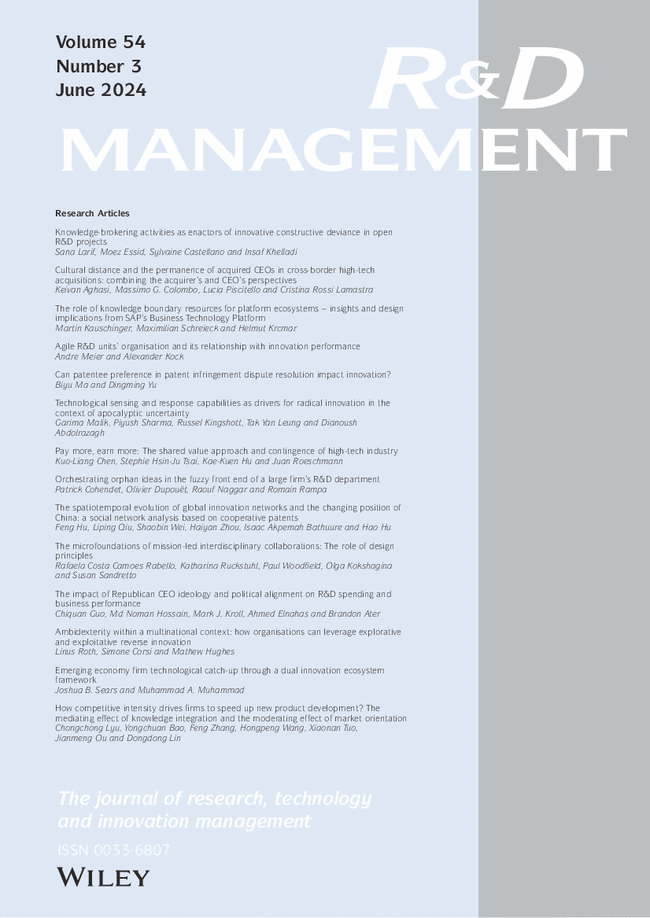在世界末日的不确定性背景下,技术感知和响应能力作为激进创新的驱动力
IF 5.7
2区 管理学
Q1 BUSINESS
引用次数: 0
摘要
本文引入了一个新的概念模型来研究技术机会主义(技术感知和响应能力)对中小企业采用渐进式和突破性技术创新的影响。我们使用偏最小二乘结构方程建模(PLS‐SEM)的对称方法和模糊集定性比较分析(fsQCA)的不对称方法,然后通过人工神经网络(ANN)建模进行敏感性分析,对228家印度中小企业的数据进行了假设检验。PLS‐SEM结果强调了技术感知和响应能力作为增量和激进产品创新的关键驱动因素的作用,以及由外部事件和危机引发的市场不确定性加强这些关系。除此之外,fsQCA的结果显示了与中小企业采用技术创新相关的多个维度配置。本文对现有文献进行了拓展,探讨了中小企业采用不同类型技术创新的过程。我们的研究结果对旨在采用技术创新的中小企业也有有益的启示。本文章由计算机程序翻译,如有差异,请以英文原文为准。
Technological sensing and response capabilities as drivers for radical innovation in the context of apocalyptic uncertainty
This paper introduces a new conceptual model to examine the impact of technological opportunism (technology sensing and response capabilities) on the adoption of incremental and radical technological innovation by small and medium enterprises (SMEs). We tested our hypotheses with data from 228 Indian SMEs using a symmetric method of partial least square structural equation modeling (PLS‐SEM) and the asymmetric method of fuzzy–set qualitative comparative analysis (fsQCA) followed by sensitivity analysis done by an artificial neural network (ANN) modeling. PLS‐SEM results highlighted the roles of technology sensing and response capabilities as key drivers of both incremental and radical product innovations and the strengthening of these relationships by market uncertainty triggered by external events and crises. Apart from this, the results of fsQCA demonstrated multiple configurations of dimensions associated with the adoption of technological innovations by SMEs. This paper extends the current literature by exploring the process by which SMEs may adopt different types of technological innovation. Our findings also have useful implications for SMEs aiming to adopt technological innovations.
求助全文
通过发布文献求助,成功后即可免费获取论文全文。
去求助
来源期刊

R&D Management
Multiple-
CiteScore
11.30
自引率
9.50%
发文量
0
期刊介绍:
R&D Management journal publishes articles which address the interests of both practising managers and academic researchers in research and development and innovation management. Covering the full range of topics in research, development, design and innovation, and related strategic and human resource issues - from exploratory science to commercial exploitation - articles also examine social, economic and environmental implications.
 求助内容:
求助内容: 应助结果提醒方式:
应助结果提醒方式:


